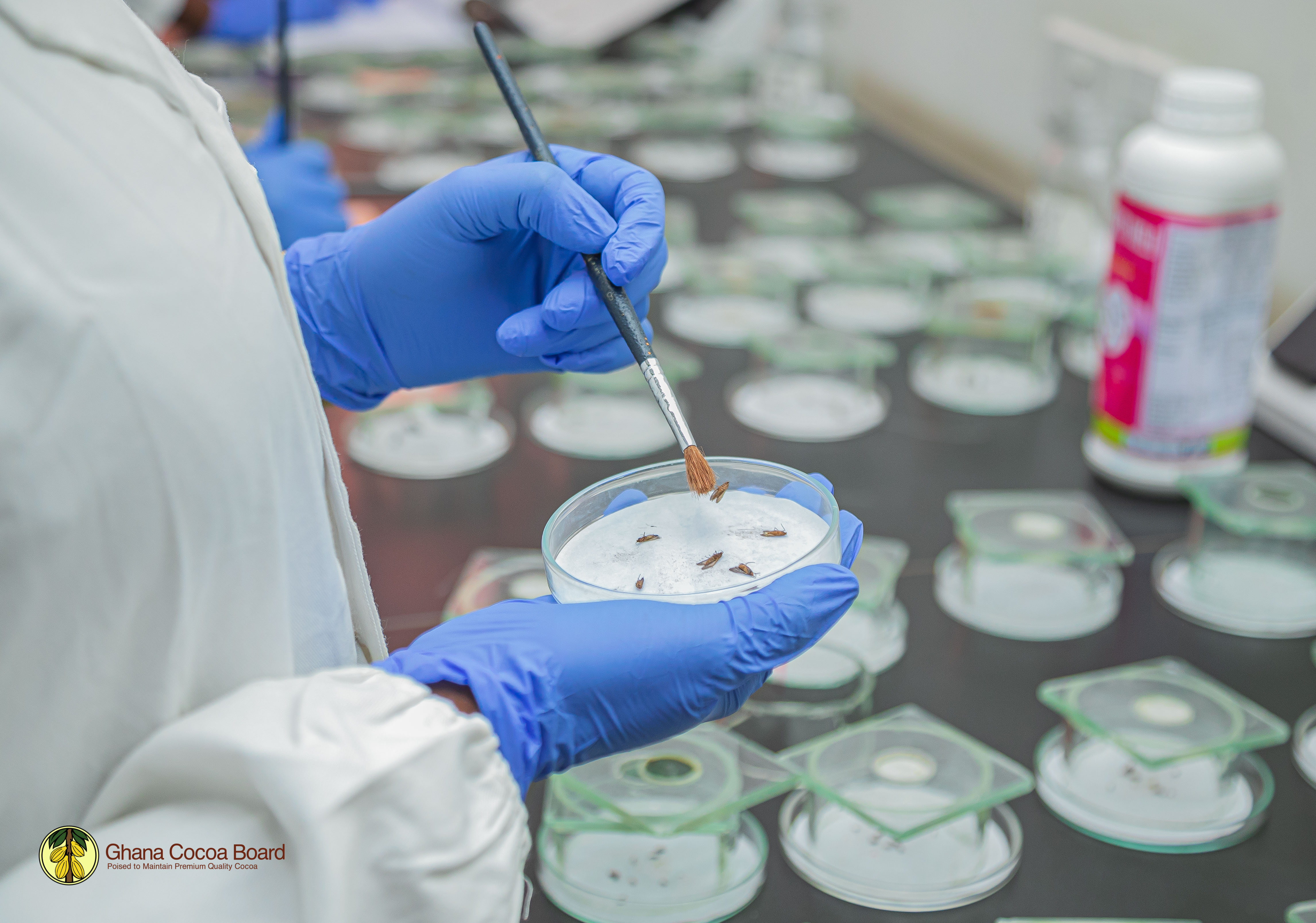INTEGRATED PLANT DISEASE MANAGEMENT: ADVANCING COCOA PRODUCTION IN THE NEW AGE

Date: 20th January 2025
Cocoa (Theobroma cacao) remains one of Ghana's most valuable assets, serving as a key cash crop that supports foreign exchange and socio-economic development. In addition to its economic importance, cocoa provides numerous health benefits. However, cocoa farmers across Ghana consistently lose between 15% and 50% of their yield to pests and diseases each year. To address these challenges, the cocoa industry has implemented various disease management practices, including chemical applications and biological controls, in an effort to protect both the environment and cocoa yields.
Today, global pressures on ecosystems are mounting, driven by increasing demands for food, and energy as populations grow and technological advancements accelerate. Traditional chemical treatments for plant disease management, while effective in the short term, can degrade soil quality and harm the environment over time. Embracing advanced plant disease management techniques is therefore essential to support both the long-term productivity of the cocoa sector and environmental sustainability.
The Role of Integrated Plant Disease Management (IPDM)
Integrated Plant Disease Management (IPDM) has emerged as a promising approach for sustainable agriculture, significantly reducing reliance on chemical pesticides. IPDM prioritizes holistic, eco-friendly practices that support soil health and ecosystem stability, helping to balance agricultural productivity with environmental protection. This sustainable approach promotes the health of the soil, water, and surrounding ecosystems, reflecting the interdependent relationship between agriculture and the environment.
IPDM is a comprehensive strategy that considers the biological, environmental, and socio-economic factors influencing plant health. It aims to control disease through a multidimensional approach, recognizing the complex interactions between crops, pests, and environmental factors (Ciancio & Mukerji, 2007). IPDM not only improves crop resilience and public health but also bolsters the sustainability of agricultural systems.
Innovative Technologies in IPDM
Modern technological advancements are driving new IPDM methods, with tools like remote sensing and smart sprayers transforming plant disease management. Smart spraying technology, widely adopted in developed countries, uses sensors and detectors to precisely target weeds, reducing environmental impact and minimizing risks to human health. By capturing data on product usage, these systems allow farmers to reduce herbicide application by up to 70% compared to conventional methods. Field experiments also demonstrate that smart sprayers can cut airborne spray drift by 87%, reduce ground spray loss by 93%, and decrease overall pesticide usage by more than 50% (Euristiq, 2020).
Another transformative tool in IPDM is genome editing, also known as genetic engineering. Genome editing allows scientists to precisely alter an organism’s DNA, creating crops that are more resistant to pests and diseases. This reduces reliance on harmful chemical pesticides, promoting eco-friendly disease management. Plant-incorporated protectants (PIPs) are one such application; these pesticidal substances are produced by plants engineered to include specific genes, such as those coding for Bacillus thuringiensis (Bt) proteins. The resulting crops—such as maize, soybeans, and tomatoes—can resist pest attacks naturally, reducing the need for chemical pesticides and safeguarding the environment (Belfort & Bonocora, 2014).
IPDM and Ecosystem Health
Nature offers invaluable resources in addressing global challenges such as climate change, pollution, and biodiversity loss. Ecosystem health is essential for sustainable agriculture, providing resilience against climate variability, ensuring healthy air, water, and soils, and promoting biodiversity. Effective plant disease management should therefore go beyond protecting plants from pests and diseases to preserving the environment on which agriculture depends.
In conclusion, integrated Plant Disease Management (IPDM) represents a transformative step forward in sustainable cocoa production, balancing the dual imperatives of increasing yield and preserving the environment. By adopting holistic practices and leveraging cutting-edge technologies such as smart sprayers and genome editing, IPDM addresses the critical challenges of pest and disease management while mitigating the environmental impact of traditional chemical methods.
As Ghana continues to prioritize its cocoa industry, implementing sustainable strategies like IPDM will be vital for safeguarding soil health, biodiversity, and ecosystem stability. These efforts not only ensure the long-term viability of cocoa farming but also contribute to global agricultural sustainability. Through innovative practices and a commitment to environmental stewardship, Ghana’s cocoa sector can maintain its reputation for producing premium-quality cocoa while supporting the well-being of farmers and the ecosystems they depend on.
By Abigail Ahorgba
Other News / Articles you might be interested in.

EDWARD KWAME YEBOAH ADJUDGED 2025 NATIONAL BEST COCOA FARMER
Mr. Edward Kwame Yeboah of Yawhenekrom in the Mankranso District of the Ashanti ...
Read More
COCOBOD BOARD CHAIR URGES STAKEHOLDERS TO SAFEGUARD COCOA AS A NATIONAL HERITAGE
The Chairman of the Board of Directors of the Ghana Cocoa Board (COCOBOD), ...
Read More
NO GALAMSEY ON OUR LAND — TUFUHENE OF JEMA VOWS
The Tufuhene of Jema in the Aowin District of the Western South Region, ...
Read More